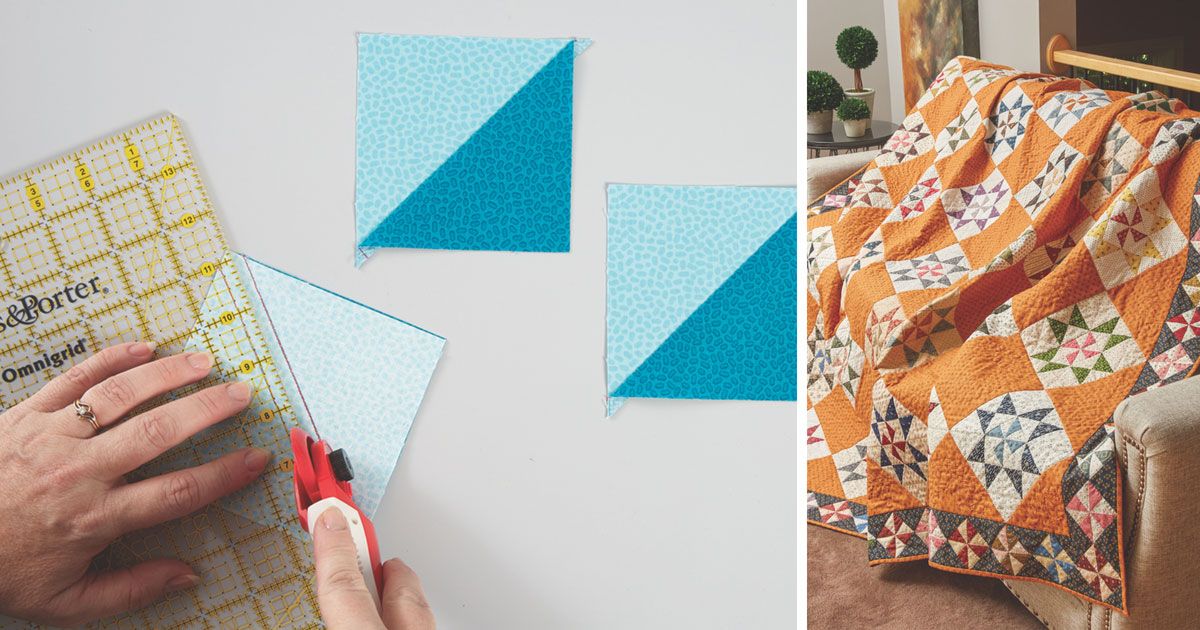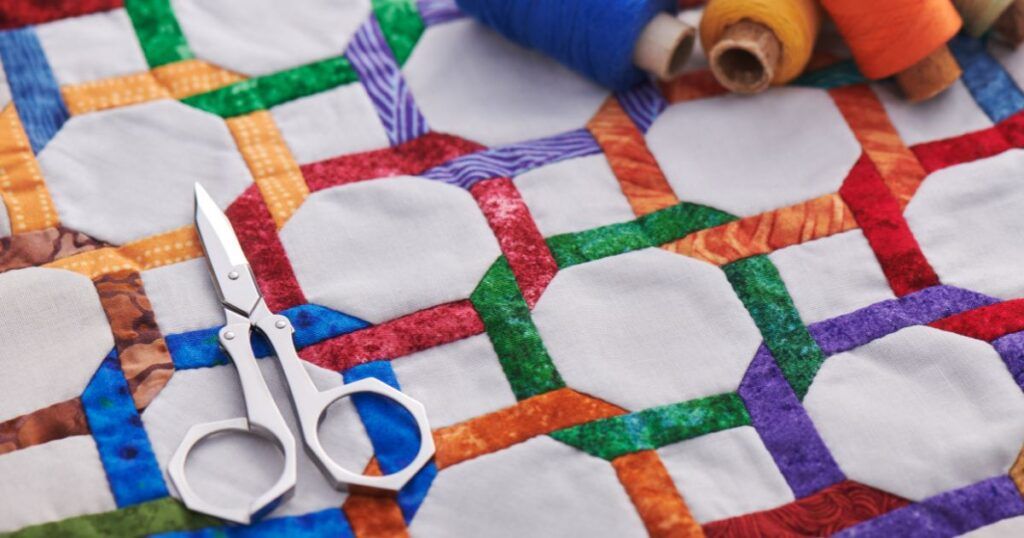Labor-Saving Quilting Tips and Techniques

We’ve decided to take it easy this Labor Day and we want you to take it easy too! This is why we’ve got these labor-saving tips, techniques, and methods. They may just save you some time and even a little heartache.
“Why isn’t this working?!”
Marion contacted us, frustrated because her Martha Washington Star quilt blocks (from Martha, Martha) just weren’t adding up.

But Marion had made several practice blocks (SMART quilter!), and the measurements turned out all wrong. Her Hourglass units were ending up 3” finished, as advertised, but her Pinwheel units were ending up 4” finished. We are humans here at Love of Quilting, so mistakes DO happen. Frankly, we’re grateful to our readers who help us locate typos and mistakes because we can post them to our errata page. In this case, though, the math worked fine. Both Angela Steiner’s Martha, Martha and Liz Porter’s Martha Washington’s Star were part of the same block swap. (You can see both quilts on the 3200 series of PBS’ “Fons & Porter’s Love of Quilting.”)

So what in the world was going on with Marion’s defiantly oversized Pinwheel units? As we dug in, we realized that she was using a different approach to making Triangle-Squares—a reliable, tried-and-true method favored by many quilters—instead of the recommended Quick-Pieced Triangle-Square method.
Ah! That explains it!

When writing the instructions, we calculated yardage to account for that ½” diagonal seam, the one that gets cut right down the middle. We love this method, because it’s reliable and quick, producing multiple Triangle-Squares and keeping bias under control. (None of those wobbly-edged triangles here! No, ma’am!) There are multiple ways to construct a quilt and multiple ways to write the instructions. At Love of Quilting, we’ll test different methods and recommend the approach we think works best. It doesn’t mean your approach is wrong—not at all! We’ve just worked the match for a different technique.
To save yourself frustration, here are a few labor-saving quilting tips:
Check for errata. Other quilters who have forged ahead will alert us to potential pitfalls. We correct these in our PDF patterns, but alas, there’s nothing we can do for print except post the corrections to this page.
Make a test block. Marion is a smart quilter! Her test block just wasn’t working out the way she sewed it, alerting her to some discrepancies. (If only I’D done a test block before blithely sewing 467 Triangle-Squares that one time… All with a 3/16” seam, because my needle position was off.)
Measure twice, cut once. Your ruler shifts when you look over your shoulder to see what the cat is meowing about this time. Or you’ve confidently cut twelve 2-1/2” strips in a row, so decide to eyeball this one… Hearts are broken this way.
Follow the directions. The simplest advice, and the hardest to follow.
Read through your pattern, and make notes. It’s quite rare for a quilter to reproduce the quilt exactly as written. You may substitute a clean white for that cream print, or decide to skip a border. Have all your tools ready to go. I like to prepare my tools and lay them all out in a mise en place culinary approach. I change my needle with every project, clean out that bobbin case, and often apply grippy material to my rulers or templates to prevent slippage. A few more of our labor-saving methods, check out our library of Sew Easy Lessons.
Happy Labor Day and happy quilting!
Vanessa
*Originally published September 2018.







Join the Conversation!